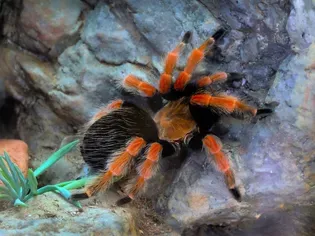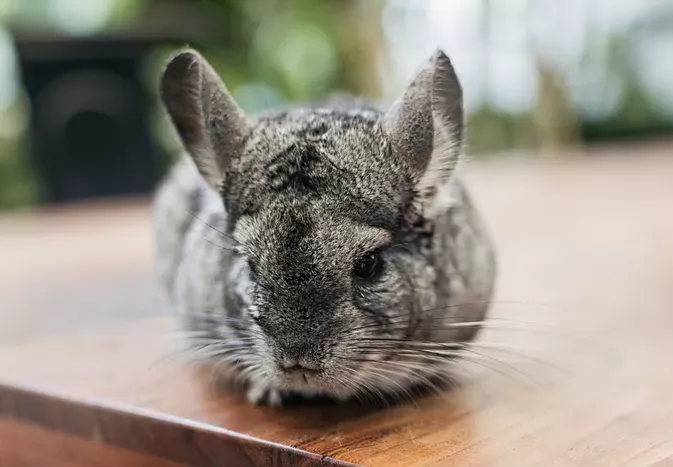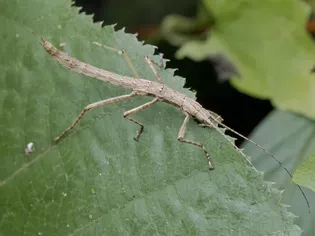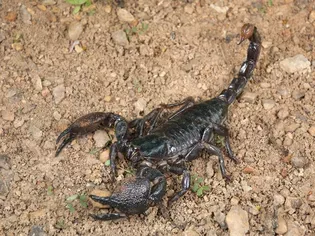How to Care for a Pet Mexican Red-Knee Tarantula
Updated on 04/26/24

Unlocking the Enigmatic World of the Mexican Red-Knee Tarantula: A Comprehensive Guide to Exceptional Care
For those captivated by the alluring realm of invertebrates, the Mexican Red-Knee Tarantula (Brachypelma smithi) stands as a captivating choice for aspiring arachnid enthusiasts. With its mesmerizing coloration, docile nature, and relatively low maintenance requirements, this species offers a rewarding experience for responsible pet owners.
In this comprehensive guide, we embark on an in-depth exploration of the essential aspects of Mexican Red-Knee Tarantula care, empowering you with the knowledge and skills to provide an exceptional habitat and meet the unique needs of your furry friend.
Section 1: Understanding the Mexican Red-Knee Tarantula
* Origins and Natural Habitat: The Mexican Red-Knee Tarantula hails from the arid regions of Mexico, where it inhabits crevices and burrows beneath rocks and vegetation.
* Physical Characteristics: This medium-sized tarantula boasts a striking appearance with a velvety black carapace (top part of the body) adorned with distinctive red or orange knee patches.
* Size and Lifespan: Females typically reach a leg span of 6-7 inches (15-18 cm), while males are slightly smaller. With proper care, these tarantulas can live for 15-20 years.
Section 2: Establishing an Ideal Environment
* Enclosure: Provide a secure and spacious enclosure, such as a glass terrarium with dimensions of at least 12x12x12 inches (30x30x30 cm).
* Substrate: A mixture of coco fiber and peat moss creates a suitable substrate that mimics the natural habitat and allows for burrowing.
* Temperature and Humidity: Maintain a constant temperature of 75-85°F (24-29°C) and humidity levels of 60-70% by using a heating pad and hygrometer.
Section 3: Nutrition and Hydration
* Diet: Mexican Red-Knee Tarantulas are opportunistic predators and primarily consume live insects. Offer crickets, mealworms, and roaches as a regular food source.
* Hydration: Provide a shallow water dish filled with clean, fresh water at all times to prevent dehydration.
Section 4: Health and Well-being
* Handling: While Mexican Red-Knee Tarantulas are generally docile, it's crucial to handle them with care to avoid stress. Wear gloves and support their body securely.
* Molting: Tarantulas shed their exoskeleton as they grow. During this time, they become inactive and require a secluded environment.
* Common Health Issues: Be aware of potential health issues such as dehydration, respiratory problems, and parasitic infections. Consult a veterinarian if any concerns arise.
Section 5: Enrichment and Behavior
* Hiding Places: Provide multiple hiding places, such as cork bark or artificial caves, to reduce stress and encourage natural behaviors.
* Live Plants: Add live plants to the enclosure to enhance aesthetics and provide a more stimulating environment.
* Interactions: Mexican Red-Knee Tarantulas are not social animals and prefer solitude. Avoid frequent handling or interactions to prevent stress.
Section 6: Responsible Ownership
* Legality: Verify the legality of owning a Mexican Red-Knee Tarantula in your jurisdiction.
* Ethics: Consider the welfare of the tarantula and treat it with respect and compassion.
* Escapes: Ensure the enclosure is escape-proof and check for potential gaps or openings regularly.
Conclusion
Caring for a Mexican Red-Knee Tarantula is an enriching and rewarding experience that requires knowledge, patience, and responsible ownership. By following the comprehensive guidance outlined in this article, you can create an optimal environment for your furry friend, ensuring its health, well-being, and longevity.
Remember to always consult reliable sources, such as books, scientific articles, and experienced herpetologists, for additional information and support throughout your tarantula-keeping journey.
Explore More Pets

Exotic Pet Species
Should You Keep a Chimpanzee as a Pet?

Exotic Pet Species
Should You Keep a Raccoon as a Pet?

Exotic Pet Species
12 Best Exotic Pets for Apartment Living

Exotic Pet Species
Best Foxes to Keep as Pets

Exotic Pet Species
Should You Keep a Northern Flying Squirrel as a Pet?

Exotic Pet Species
Should You Keep Stick Insect as a Pet?

Exotic Pet Species
Should You Keep a Big Cat as a Pet?

Exotic Pet Species
8 Top Scorpion Species Suitable as Pets